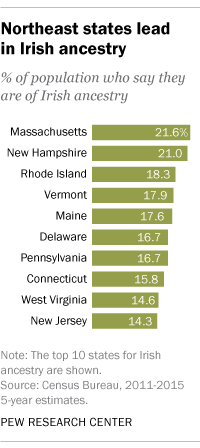With this St. Patrick’s Day, here’s information that may lower the occasion: The rates of Americans who find their ancestry back to Ireland – long among the most notable subgroups in National culture – are gradually declining.
After Germans, 32.7 million Americans, or one-in-five, revealed themselves to be of Irish ancestry, which makes it the 2nd-largest ancestry group within the U.S. in 2015. Additionally, almost 3 million Americans stated Scotch-Irish ancestry, or simply under 1% of the whole population. (The Scotch-Irish were primarily Ulster Protestants who moved towards the British cities within the years before independence, while Irish Catholics didn’t start arriving in vast quantities before 1840s.) In comparison, the Republic of Northern and Ireland Ireland possess a mixed population around 6.6 million.
The rates of both Irish and Scotch-Irish-Americans have dropped a great deal previously two-and-a-half years, and the pattern doesn’t seem prone to change.
Both ancestral communities are more than the U.S. population in general. In 2013, the average age of those was 52.1 for all those of Scotch, and 40.5 -Irish ancestry, versus a mean age of 37.8 for the whole population. Or would be the Irish immigrating for the U.S. in something near to the figures they used to: In fiscal 2015, based on Division of Homeland Security data, only 1,607 Irish-born people acquired legal permanent residency.
Irish and Scotch-Irish-Americans are highly concentrated in several regions of the nation, showing their traditional migration patterns. Poor people Irish immigrants who left their famine-stricken homeland within 1850s and the 1840s usually completed in or near to the Northeastern port towns where they appeared.
Even today, the claims using the greatest share of citizens claiming Scotch-Irish ancestry are New York (2.6%), Sc (2.4%), Tennessee (2.2%) and West Virginia (2.0%).
